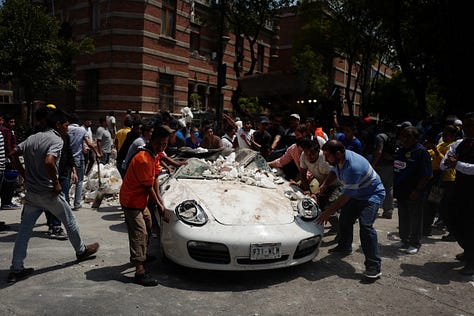
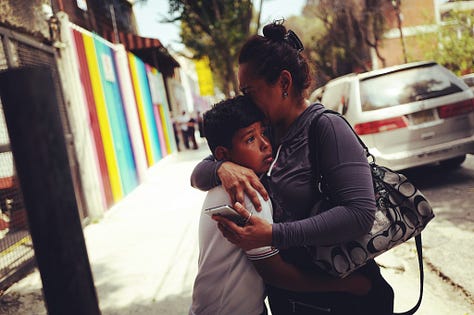



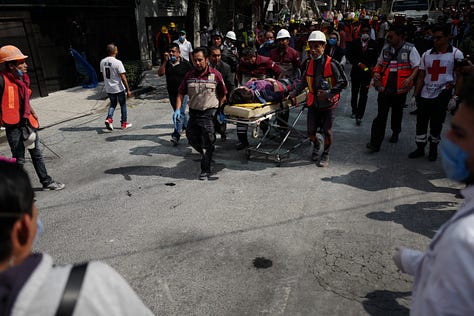
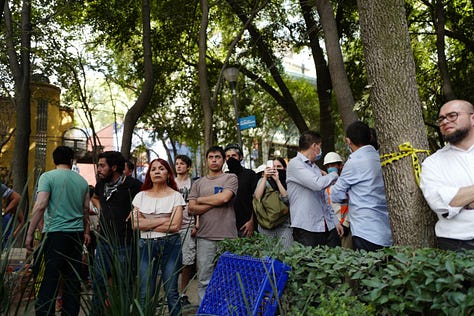
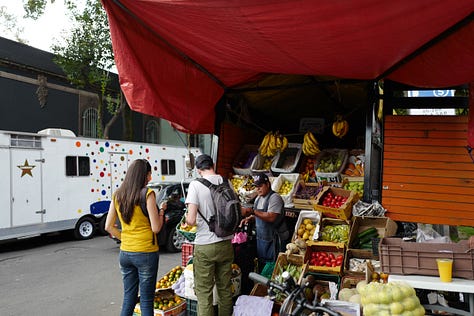
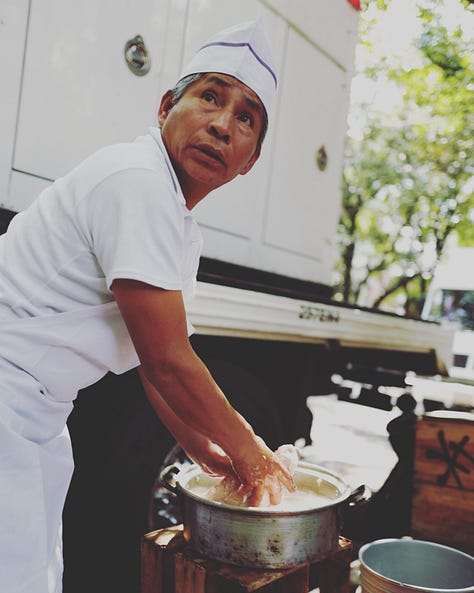
In the wake of the Los Angeles wildfires that have claimed dozens of lives and destroyed billions worth of personal property, I wanted to continue the journey we began last week in packing the essentials.
A natural disaster is of course a very different thing than packing for a recreational trip across the seas but lots can be learned from preparing to be on the road for a while – intentionally or unintentionally.
On September 19, 2017 I was living in Mexico City. That very morning, I had just finished my Spanish tutoring session at a cafe, stepped out onto the sidewalk outside and sat down on a bench when the ground started shaking.
As the shaking continued it was clear that this wasn’t just a big semi hitting a bump in the road that vibrated down the street but something bigger. This was the largest earthquake in Mexico City in almost 40 years.
I jumped up from the bench I was sitting on and ran out into the middle of the street, followed by hundreds of people flooding out of all of the surrounding old buildings, screaming in panic, faces pale and scared.
The street was turning into a wave, moving under us and the buildings were swaying back and forth, facades on the verge of falling into the street, threatening with either killing or at least severely hurting most of us.
The 7.1 earthquake felt like an eternity but only lasted less than a minute. But during this minute I realized that I might die, and started to record a video to my sons when my phone died.
Fucking phone, I said to myself, now when I really need you, you fail me.
I looked up towards the beautiful blue sky and was filled with an inner gratefulness for the love I knew they had for me, watching the street lamps and wires moving across the azure like rattlesnakes, and prepared myself for the worst.
A few seconds later the ground stopped shaking and the buildings stopped swaying and people burst out in relieved tears all around me. I quickly sprinted home, still shaken, passing many buildings that had just collapsed.
At home I was grateful that my building was still standing, picked up my camera, filled my backpack with water, food, and extra clothing and headed out into the neighborhood to help out. I wanted to be prepared if there were aftershocks.
On every other corner people were being dug out of the rubble from buildings that had collapsed – some dead, some still alive. Water, gas, and electricity were out or turned off to avoid flooding, gas explosions, and electrocution.
Mexico City had become a battlefield in less than a minute.
I spent the whole day and night walking around a city that had halted to a complete stop, offering my help and making photos. Seeing the devastation I felt lucky that I was alive and unharmed.
What I learned during that horrific experience is that even if you survive an earthquake (or a wildfire or a tsunami) you might still have to survive the next 48 hours on your own before help is organized and available.
We have become so dependent on that everything is working around us, the easy access to food, water, and gas, that we don’t think about how we would survive if everything was turned off for just a few days.
After that near fatal experience I decided to always have a Grab-and-Go bag ready plus making sure that everything irreplaceable I owned was stored and accessible from the cloud, wherever possible.
Here are the actions I took and now my recommendations:
Create a Grab-and-Go bag, very similar to the travel packing I shared last week but with the addition of a First Aid kit, a knife or multi-tool, needed medicine, flashlight, cash in small denominations, and an extra battery charger for tech devices.
Digitize everything irreplaceable, like letters from friends, old photos, important documents, drawings from your kids, expired passports, and photos of things that matters to you.
Keep reading with a 7-day free trial
Subscribe to Fewer Better Things to keep reading this post and get 7 days of free access to the full post archives.



